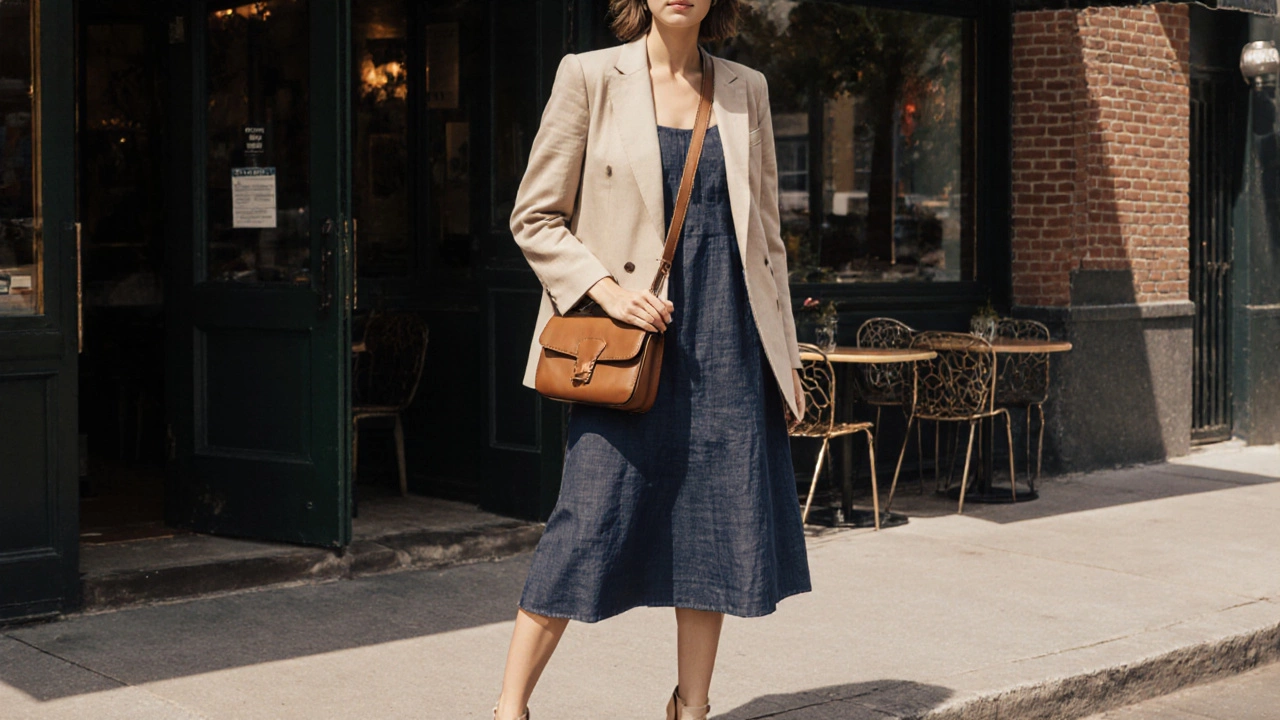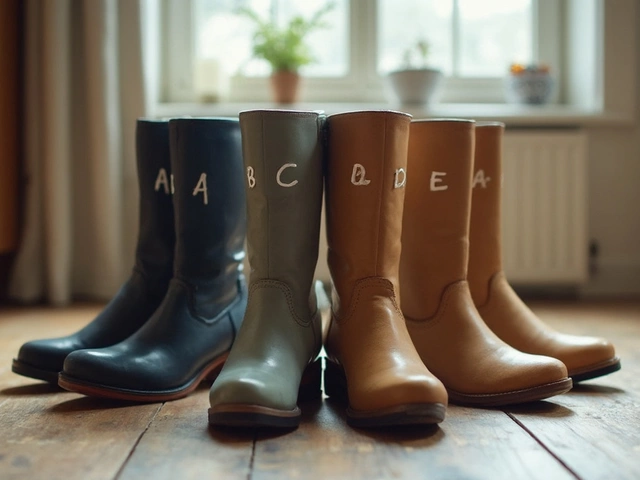Ever bought a beautiful sundress, put it on, and still felt like something was off? You weren’t alone. The sundress rule isn’t some secret code from a fashion magazine-it’s a practical, real-world guideline that helps you wear summer dresses confidently, comfortably, and appropriately. It’s not about following trends. It’s about knowing when, where, and how to let a sundress work for you, not against you.
What Exactly Is the Sundress Rule?
The sundress rule is simple: Match the dress to the occasion, not just the weather. A sundress isn’t just any lightweight dress worn in summer. It’s a style that’s meant to be breezy, casual, and relaxed-but not always appropriate everywhere. The rule says: if you’re going somewhere that requires a little more polish-like a work meeting, a formal dinner, or a church service-a sundress alone isn’t enough. You need to elevate it.This isn’t about being overly strict. It’s about avoiding the awkward moment when you show up dressed for the beach at a cousin’s wedding. The sundress rule helps you bridge the gap between comfort and context. Think of it like wearing flip-flops to the office. You can do it. But you shouldn’t.
When Does the Sundress Rule Apply?
The rule kicks in when the setting demands more than bare legs and a cotton top. Here are the most common situations where it matters:- Workplaces with business casual dress codes - A floral sundress might look cute, but paired with a denim jacket and sandals? It reads as too casual. Add a lightweight blazer and closed-toe sandals to bring it up to code.
- Family gatherings or religious services - Many cultures expect modesty in these settings. A knee-length or longer sundress with straps wider than one inch usually passes. A spaghetti-strap dress? Add a cardigan or shawl.
- Dinner dates or upscale restaurants - A sundress can work here, but only if it’s made of a nicer fabric like linen blend, silk, or structured cotton. Avoid beachy prints, frayed hems, or flip-flops. Swap them for low heels or elegant flats.
- Job interviews - Even in creative industries, a sundress alone signals you didn’t prepare. Layer it with a structured cardigan or tailored jacket. Choose solid colors or subtle patterns. No tie-dye.
On the flip side, the rule doesn’t apply at all in these places: the farmer’s market, a backyard BBQ, a lakeside picnic, or a casual weekend stroll. That’s when your sundress can shine-no additions needed.
How to Elevate a Sundress Without Overdoing It
You don’t need to buy a whole new wardrobe to follow the rule. Small tweaks make all the difference.- Add a layer - A denim jacket, linen shirt tied at the waist, or a lightweight cardigan instantly adds polish. It also gives you flexibility when the AC is blasting or the sun dips.
- Swap footwear - Flip-flops are fine for the beach. For anything else, try leather sandals, espadrilles, or even clean white sneakers. They keep it casual but intentional.
- Choose the right fabric - Cotton voile and linen are great. But avoid anything that looks like it came from a discount bin-thin, stretchy, or overly sheer fabrics can look sloppy, even if they’re technically a sundress.
- Accessorize with purpose - A simple gold necklace, small hoop earrings, or a woven tote bag can turn a basic sundress into something that says, “I put thought into this.” Avoid oversized sunglasses or beach towels as bags.
One real example: A Toronto woman wore a navy linen sundress to a client lunch at a downtown bistro. She paired it with a beige linen blazer, nude block heels, and a leather crossbody. She looked put-together, not overdressed. Her client said, “You always look so effortlessly stylish.” That’s the goal.

What to Avoid
Some common mistakes break the sundress rule without anyone realizing it:- Wearing a sundress with no undergarments - Sheer fabrics demand attention to detail. A nude slip or built-in lining isn’t optional-it’s necessary.
- Choosing prints that are too loud - Giant tropical flowers or cartoonish patterns look fun at a pool party. In a gallery opening or a job interview, they look like you’re trying too hard.
- Ignoring fit - A sundress that’s too tight or too loose looks careless. The right fit should skim your body, not cling or swallow you.
- Wearing it in cold weather without layering - Even in summer, evenings can be chilly. A light jacket isn’t a fashion crime-it’s common sense.
Why the Sundress Rule Still Matters in 2025
You might think dress codes are outdated. But in 2025, people still judge quickly-and fashion is one of the first things they notice. A 2023 study by the Fashion Institute of Technology found that 72% of professionals formed an opinion about someone’s competence within the first 10 seconds of meeting them, mostly based on appearance.The sundress rule isn’t about conforming. It’s about controlling the message you send. You can still be yourself. You can still love flowy dresses. But when you know how to adapt, you’re not just dressed-you’re dressed with confidence.
Summer isn’t the time to hide. It’s the time to show up, feeling good, and looking like you meant to. The sundress rule helps you do that without overthinking it.

Quick Checklist: Does Your Sundress Pass the Rule?
Use this before you leave the house:- Is the dress appropriate for the venue? (Not just the weather)
- Are the straps wide enough? (At least 1 inch)
- Is the length knee-length or longer? (Unless it’s a beach or casual event)
- Do you have a light layer if needed?
- Are your shoes clean and intentional?
- Is the fabric opaque enough? (Hold it up to light-can you see through it?)
If you answered yes to all, you’re good to go.
Frequently Asked Questions
Is the sundress rule the same everywhere?
No. The rule adapts to culture and context. In Mediterranean countries, a strapless sundress might be perfectly normal at a casual dinner. In Japan or conservative parts of North America, even a modest sundress might need a cover-up. Always consider local norms. When in doubt, err on the side of more coverage.
Can I wear a sundress to a wedding?
Yes-if it’s a daytime, outdoor, or beach wedding. Avoid white, ivory, or anything too revealing. Choose a dress with a modest neckline, knee-length or longer hem, and avoid flashy sequins. Pair it with a light wrap and closed-toe sandals. Always check the invitation for dress code hints.
Are sundresses only for women?
Traditionally, yes-but fashion is changing. More gender-neutral summer dresses are appearing in stores, and anyone can wear a lightweight, flowy dress in summer. The rule still applies: match the style to the occasion. A man wearing a linen dress to a business meeting might raise eyebrows, but at a music festival? It’s perfectly acceptable.
What’s the difference between a sundress and a summer dress?
All sundresses are summer dresses, but not all summer dresses are sundresses. A sundress specifically refers to a casual, often sleeveless or strapless dress made of light fabric, usually with a simple silhouette. A summer dress is a broader term-it could include wrap dresses, shirt dresses, or even midi dresses with sleeves. Sundresses are the most relaxed version.
Do I need to follow the sundress rule if I’m over 50?
Absolutely. Age doesn’t change the rule-it just means you have more experience knowing what works for your body and style. A well-chosen sundress can look elegant at any age. The key is fit, fabric, and context. A 60-year-old woman in a linen sundress with a tailored cardigan and loafers looks more polished than a 20-year-old in the same dress with flip-flops to a job interview.
Final Thought: It’s Not About Rules. It’s About Respect.
The sundress rule isn’t about limiting your freedom. It’s about respecting the space you’re in-and the people in it. You don’t need to wear a suit to a summer picnic. But you also don’t need to show up to a dinner party looking like you just got off the beach.Summer is the season to feel light, free, and joyful. The sundress rule helps you carry that feeling into every part of your life-without stepping out of place. Wear what makes you happy. Just make sure it fits the moment too.





